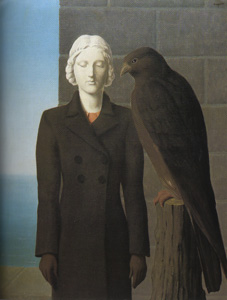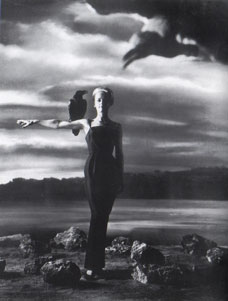 |
||||||||||||||||
| |
|
|
|
|
|
|
|
|
||||||||
 |
|
 |
|
 |
|
 |
|
|
||||||||
| |
|
|
|
|||||||||||||
| |
|
|
|
|
|
|
|
|
|
|
|
|
|
|
|
|









Rene
Magritte, Deep Waters, 1941
Philippe
Halsman, Tippi Hedren for The Birds, 1963
|
|||||||||||||||||||||||||||||||||||||||||||||||||||||||||||||||||||||||||||||||||||||||
 |
|||||||||||||||||||||||||||||||||||||||||||||||||||||||||||||||||||||||||||||||||||||||
      |
|||||||||||||||||||||||||||||||||||||||||||||||||||||||||||||||||||||||||||||||||||||||
 |
 |
||||||||||||||||||||||||||||||||||||||||||||||||||||||||||||||||||||||||||||||||||||||
|
Rene
Magritte, Deep Waters, 1941
|
Philippe
Halsman, Tippi Hedren for The Birds, 1963
|
||||||||||||||||||||||||||||||||||||||||||||||||||||||||||||||||||||||||||||||||||||||
| Rene Magritte, born in Lessines, Belgium in 1898, was best known for his surrealist paintings that juxtaposed seemingly unrelated objects. For example, one his best-known works, Le Fils de l’Homme, contains a man with a floating apple before his face. This style of mixing simple objects in unusual contexts was already evident in Magritte’s first one-man show in Brussels in 1927. Magritte’s work has frequently been referred to as “Magic Realism,” a realistic type of painting closely related to surrealism. His painting Deep Waters clearly relates to Philippe Halsman’s publicity photograph of Tippi Hedren for The Birds. The two are closely related formally; both images contain female characters and ominous birds pointed at their heads. The backgrounds of both are also similar in that they both contain water. Hitchcock’s interest in women as statues is also evident here. In the dream sequence from Spellbound, Ingrid Bergman’s character changes into a statue. It is also widely known that Hitchcock was obsessed with idealized representations of women. His primary female characters, including Ingrid Bergman, Tippi Hedren, Janet Lee, Eva Marie Saint, and Kim Novak all have a similar appearance. Magritte’s statue refers to this idealized image of women. | |||||||||||||||||||||||||||||||||||||||||||||||||||||||||||||||||||||||||||||||||||||||